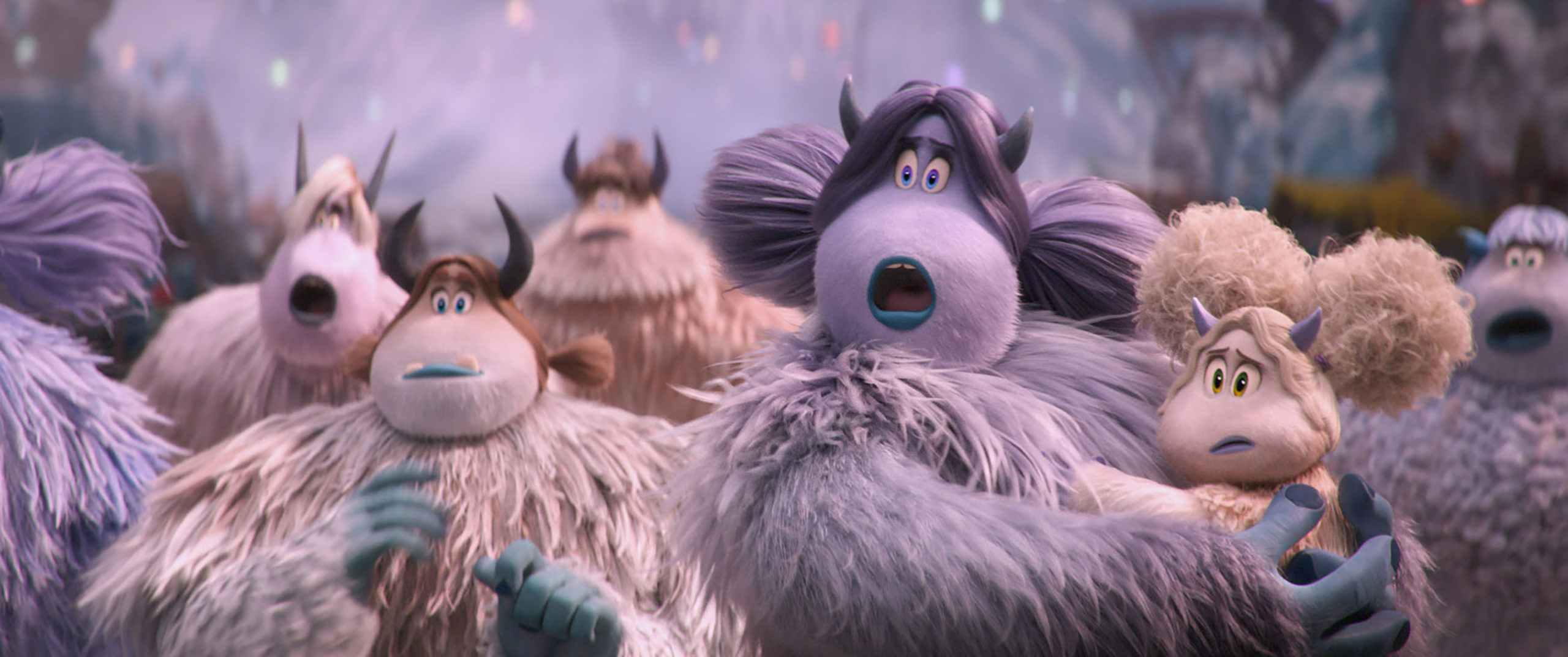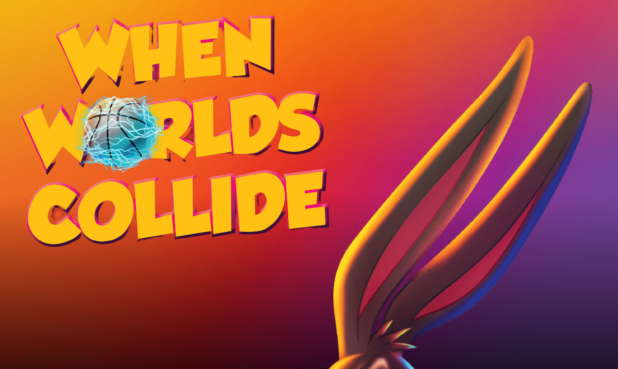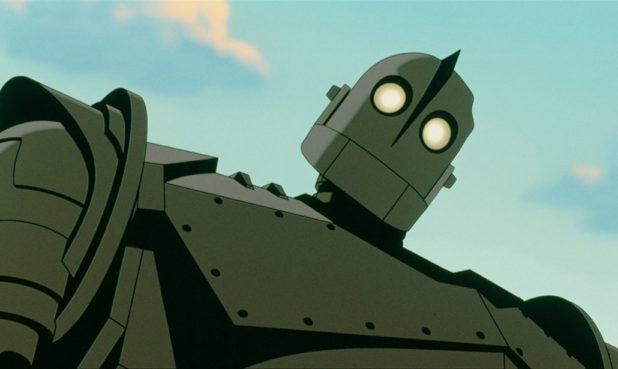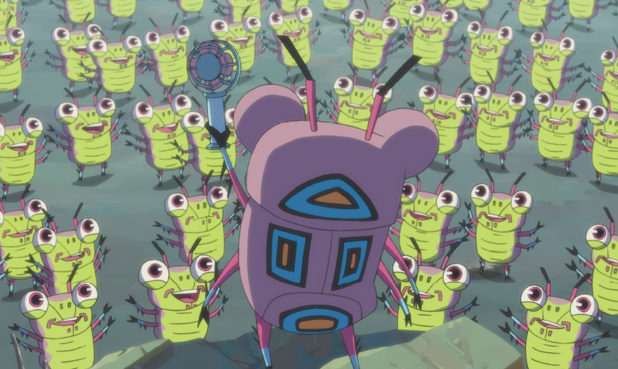In Smallfoot (Sept. 28), the discovery of a human disrupts the idyllic mountain community and makes them question what’s out there in the bigger world. Art director Devin Crane shares the artistic challenges of working in an all-white, snowy environment with lots of fur.
CAN YOU TALK ABOUT THE CHALLENGES OF SNOW AND A WHITE PALETTE?
It was an artistic challenge; just to stretch yourself in terms of values and colors—from a white-cream to a violet blue, and finding complex ways of using value to get them to read against the snow. We wanted the environment and the village to have tons of detail and to feel lived in, like it had been there for hundreds of years. We were trying to make really cool compositions that would instantly have a focal point so the audience wouldn’t lose our main character.
HOW DID YOU START THE CHARACTER DESIGN PROCESS?
We started with the idea that fur is fun, embracing the fact that we’re going to have really long hair, pushing that technical challenge and then almost building the world around it—thinking of the cold as an ally and not a harsh world for them.
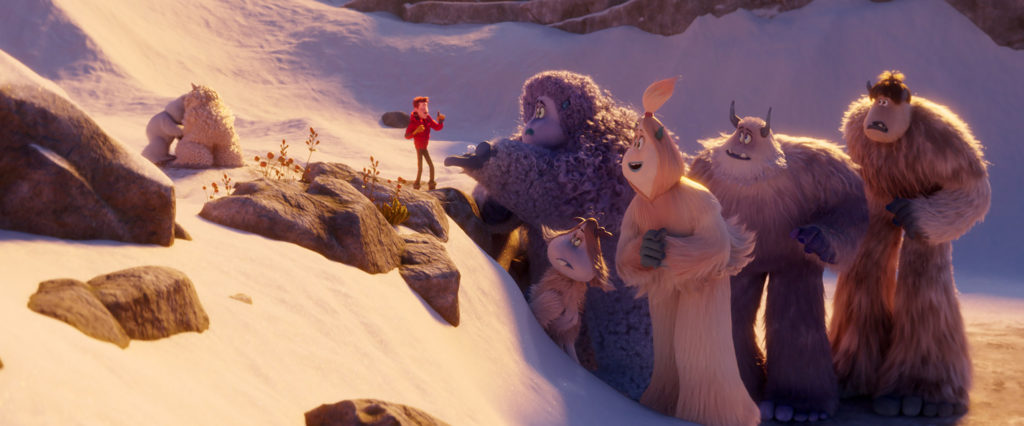
HOW DID YOU DIFFERENTIATE BETWEEN THE CHARACTERS SO THAT THEY LOOKED LIKE THEY BELONGED TO THE SAME TRIBE BUT WERE ALSO VERY DISTINCTIVE?
It was important to look at each character, get a sense of his or her personality and find ways to make them stand apart so that you would know Migo instantly, you would know Meechee instantly. We tried versions where the color was more pushed and it didn’t quite feel yeti so we landed in these really subtle shades of violet. We gave Meechee a Dior-inspired cape to push the fashion, and there were all these thoughts on braiding too. When you look at a character you should get a sense of who they are—like the Stonekeeper. All his hair hangs with the long beard, it’s thinning at the base, and you can feel the age in him.
THE YETIS LOOK LIKE THEY USE THEIR FURS AS OPPOSED TO BEING OVERLY COIFFED.
That was intentionally designed. When you look at wolves and bears, their fur is so distinctive. We didn’t think of yetis as monsters but as an animal species. We wanted to anchor it in our world and something that would be believable. We worked hard at trying to find a unique groom and style and movement for every single character.
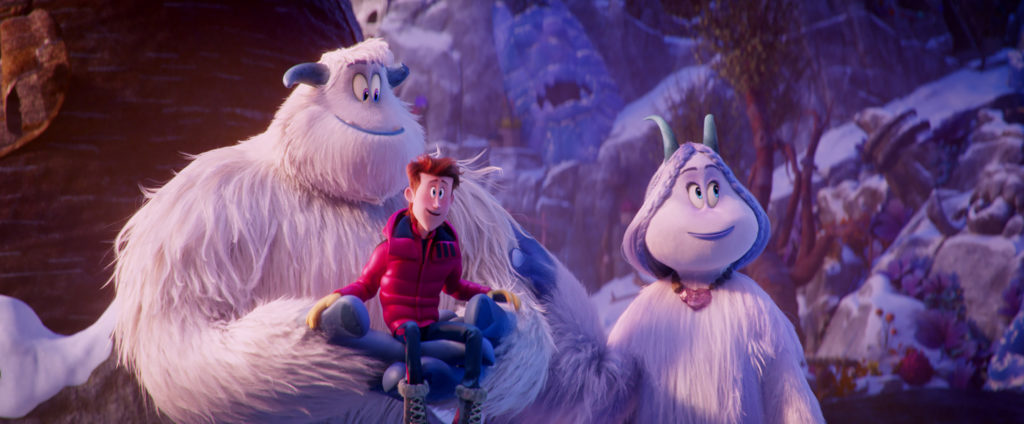
CAN YOU TALK ABOUT THE EVOLUTION OF THE COLOR STORY?
We wanted to chart the color of the emotional aspect of the film—we did lots of concept paintings to set the tone for the filmmakers and the crew. If you Google snow it comes up as white but if you really look at it in different areas, like the Himalayas or Helsinki, you see these pinks and blue shadows, violets. So you can have an entire scene in green [hues] or orange. You can almost pick a dominant color that can push the mood. So we were really trying to [evoke] mood and use the snow as a reflector to create these really dynamic color shifts.
In four sequences, you see a shift of mood happen in the scene where it goes from super bright to super dark, or from sunrise to sunset. Having snow, you get beauty lights from every angle, almost like that 1940s bounce light, which you can play strong for drama or soft for romance.
The directors [also] encouraged us to go expressionistic with the color and really push the tone. And by doing so it really helped us get away from pure white scenes except for a couple that were truly intentional.
WHAT THOUGHT WENT INTO CREATING THE YETI WORLD THAT SEEMS TO BE ELUSIVE TO HUMANS?
The yetis picked this mountain that would literally shield them from the world at the highest peak in the world. Everything is closed off yet still warm and inviting to give the sense of a cozy and harmonious village. It has a romantic and storybook feel to it. The contrast of the human village was that it was open and neon with glowing lights—[materials like] steel, brick, tile. Everything is a bit sharper. The yetis world is a land that time forgot—a preserved, perfect utopia—while the human world is frantic and frenetic and exciting.
